High-yielding onion variety “Shetana” for long-term storage
How to get a rich harvest of onions from a small summer cottage? Experienced farmers recommend paying attention to the Shetana MS variety. This crop has captivated many summer residents not only with its frost resistance and simple agricultural technology, but also with its excellent taste characteristics.
Golden onions successfully complement any salads and serve as an indispensable ingredient in pickled appetizers. What are the benefits of Shetan onion and how to grow it correctly, read the article.
Description of the Shetana onion variety
Winter onion Shetana MS (MS - frost-resistant) was developed by Czech breeders for breeding in open ground. When planting with sowings, the percentage of germination is higher than when sowing seeds.
Reference! Sets are one-year-old onions (small onions) grown from seeds. You can grow it yourself or buy it at a gardening store.
Entered into the State Register of the Russian Federation in 1998.
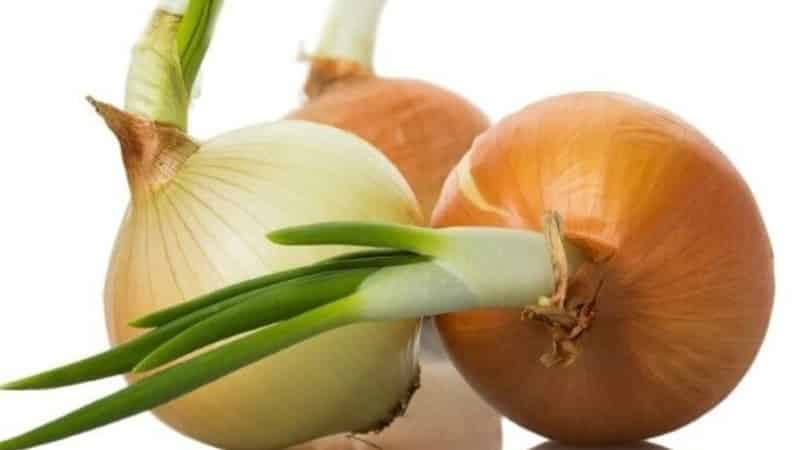
Origin and development
Onion cultivation began in Asia (Afghanistan and Iran) about 4 thousand years ago. A little later, they began to breed it in Egypt, Greece and India.
In Russia, the vegetable became known in the 12th century.. Since then it has become widespread and is added to many dishes.
This is interesting! In Ancient Rome, they firmly believed that the bitter taste gave courage, energy and strength, so the legionnaires were given food that contained a lot of onions, and in Ancient Greece, beautiful onions were given as a gift to the gods - the plant was considered sacred.
Composition, vitamins and beneficial properties
The vegetable contains:
- saponins (complex organic compounds from plant glycosides);
- various sugars (glucose, fructose);
- pectins;
- iron;
- potassium;
- fluorine;
- vitamins (ascorbic acid, tocopherol);
- essential oils (give a pungent odor due to their high sulfur content).
Availability of iron helps prevent or treat anemia. Potassium strengthens the heart muscle, thereby normalizing heart function. Vitamins strengthen human immunity, and onions have antiseptic and antibacterial properties.
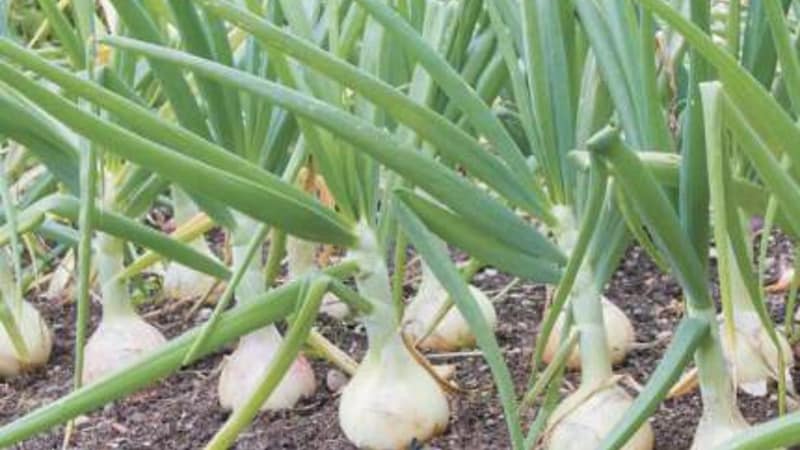
Ripening period
The onion variety Shetana belongs to the mid-early. When sowing seeds, ripeness occurs after 90 days, when planting with sets - after 60-70 days.
Productivity
The quantitative indicator is stable, from Q1. m harvest up to 5 kg of fruits. The safety of the bulbs is at a high level; they are stored for a long time in a dry and cool room without losing their presentation or taste.
Disease resistance
The culture is characterized by increased immunity to diseases. Even when bred in a humid climate, it is not affected by bacterial rot. The variety is resistant to fusarium rot, but susceptible to downy mildew.
Reference! Downy mildew (downy mildew) is a fungal disease that spreads to any part of the plant.
Characteristics of the bulb
Round shape, yellow color, closer to straw, neck of medium thickness. The average weight is 70-90 g, all fruits are aligned, almost the same size. The taste is semi-sharp, the flesh is white, juicy.
The vegetable is used universally in cooking.: It is consumed fresh, added to salads and hot dishes.Onions are used for marinades, canning, baking and drying.
This is interesting:
How to eat onions for weight loss: recipes for dietary dishes
Climate requirements
The variety is recommended for breeding in the central and southern regions our country, although it is successfully grown in all latitudes.
The photo shows the onion set of Shetan MS.
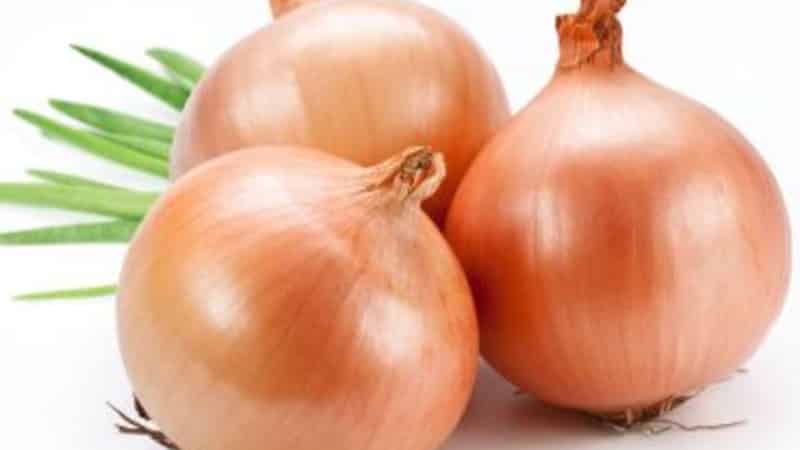
Main advantages and disadvantages
The positive characteristics of culture include:
- possibility of growing from seeds or sevkom;
- average ripening time;
- frost resistance;
- unpretentious care;
- high productivity;
- presentation of the fruit;
- long shelf life;
- long transportation;
- breeding opportunity for sale.
The negative side is considered poor resistance to downy mildew.
What is the difference from other varieties
The main difference between Shetana and other varieties is culture is not prone to bolting. Onions that are harvested do not produce a good harvest, and the fruits quickly deteriorate during storage.
Features of planting and care
The ability to grow a variety in two ways increases demand among gardeners. The culture is propagated through seedlings and direct planting of onion sets in the soil.
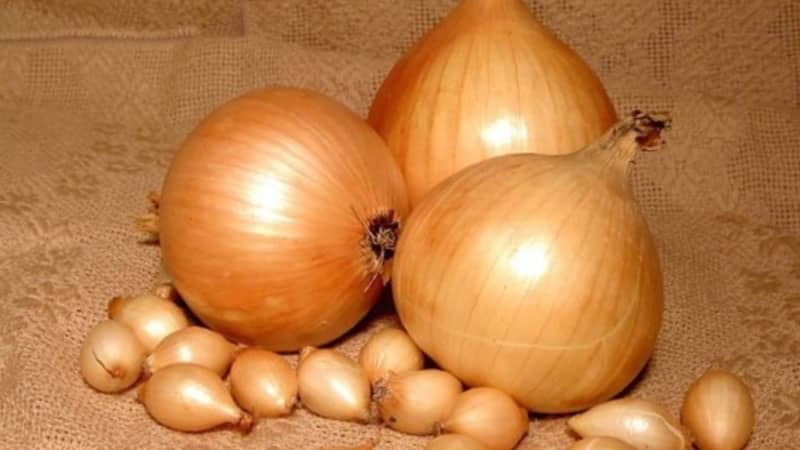
Preparing for landing
Before sowing the seed, the grains are carefully inspected and only selected large, light in color and without visible damage. Then the seed material is disinfected in a weak solution of potassium permanganate for 20 minutes, after which it is placed in growth stimulants to improve germination. The drug “Zircon” is used as a stimulant.
Onion sets must be thoroughly dried and then heated. It is kept at a temperature of 20°C for two weeks, and then heated for 8 hours at a temperature of +30-35°C.
Important! High temperature activates the growth process.
For planting, select seedlings no more than 2 cm in diameter, since large bulbs germinate more slowly.
Soil requirements
To prepare the soil use garden soil, fine washed river sand, peat and humus in equal quantities. River sand acts as a leavening agent, and peat and humus saturate the soil with additional nutrients.
After mixing all the components, the resulting mixture is poured with a hot solution of manganese or steamed in the oven at a temperature of 50°C for 15 minutes for disinfection.

Dates, scheme and rules of planting
Planting times depend on weather conditions: in warm weather, the seedlings are planted in late April - early May. By this time the soil should warm up to 13-14°C. Late sowing will affect the yield, and sowing in cold weather will lead to the formation of flowers.
Read also:
Onion garlic or hair onion - what is Rocambole garlic?
How black pepper grows, its benefits and harms, areas of application
Sowing seeds for seedlings
Sowing seeds for seedlings begins at the end of March or early April. Any containers are suitable: a common wooden box or individual containers.
Seeds are sown to a depth of 1 cm at a distance of 3-5 cm from each other. Sprinkle the soil on top, lightly moisten with warm, settled water from a spray bottle and cover with film. The containers are left in a room with a temperature of 22-24°C.
When shoots appear, the film is removed and the containers are placed on the windowsill. The temperature is reduced to 18°C.In such conditions, the seedlings will not stretch.
As the top layer of soil dries out The seedlings are watered with warm, settled water without flooding the sprouts. Do not forget that excess moisture leads to fungal diseases. After each watering, the soil is carefully loosened to improve air permeability.
During the seedling period, seedlings are fed twice complex fertilizers for seedlings. All fertilizing is combined with watering.
A week before transplanting into the ground, the seedlings are hardened off, bringing the conditions closer to street conditions. To do this, the containers are taken out into the open air for several hours during the day.
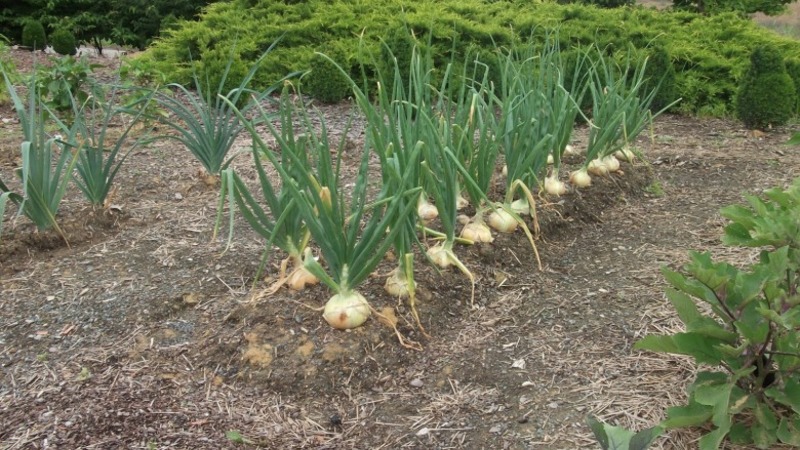
Sowing onion sets
Sevok is planted in spring or before winter. Winter plantings are carried out two weeks before the onset of frost. The diameter of the bulbs should not exceed 1 cm. To prevent diseases and pests, they are treated with a manganese solution and buried 4 cm into the prepared soil.
Two weeks before sowing the soil is dug up and a full range of minerals is added.
Used for spring planting bulbs no more than 2 cm in diameter. The distance between the holes is left at least 7 cm, and between the rows 15-20 cm. With this scheme, the seedlings will receive a sufficient amount of heat and light and will be able to ventilate as needed.
After sowing, the beds are mulched peat or straw and water well with warm water.
Features of cultivation
Onion beds are chosen in a sunny place with loamy soil. In case of increased acidity, the soil is neutralized with slaked lime or dolomite flour. Check the acidity of the soil using a litmus indicator.
Dissolve a little soil in a glass of water and dip litmus paper into the mixture.If the indicator turns red, it means the soil is acidic; if the color is green, the soil reaction is within normal limits.
Watering mode
Water moderately when the top soil layer dries out., no more than twice a week. When the fruit is forming, watering is increased, but the level of humidity in the beds is controlled. Water at the root in the morning or evening. Two weeks before harvest, watering is stopped.
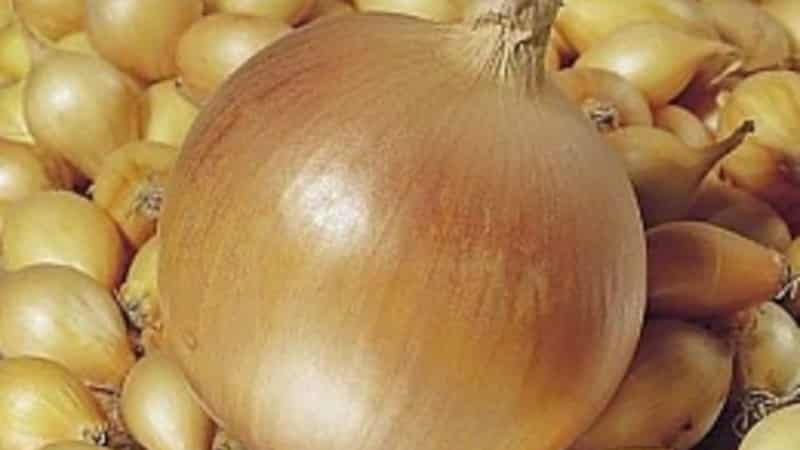
Loosening and weeding
Loosen the beds after each watering and remove weeds with roots. By filling the rows, weeds interfere with the penetration of light, which negatively affects the formation of bulbs. Weeds also take nutrients from the ground that are necessary for the full development of seedlings.
Feeding
During the entire growing season, the crop is fed three times. The first fertilizing of nitrogen is applied two weeks after germination. Nitrogen is necessary for the growth of green mass.
Feed a second time after two weeks after the first feeding. Organic matter is used as fertilizer, for example: bird droppings, mullein solution or urea in a ratio of 1:15.
The third fertilizing is applied at the time of fruit formation. A mineral complex with a predominant content of phosphorus and potassium is used.
Pest and disease control
More often plant diseases occur due to improper care, that is, in case of non-compliance with agricultural technology and crop rotation rules. Shetana is susceptible to downy mildew, which appears with high humidity and sudden changes in temperature.
When sprayed with fungicidal preparations, onion feathers should not be eaten., so gardeners use traditional methods to combat the disease.Among the most effective methods is treating plants with whey in a ratio of 1:10. Serum bacteria are safe for humans, but harmful to fungus.
The onion fly is a dangerous pest, but not a mature individual, but its larvae, which penetrate the soil and destroy the upper part of the bulb.
An effective measure in combating the pest is treating plants with sharp-smelling decoctions of mint, valerian or pine needles.

Harvest and storage
Harvesting begins in early August, when the tops fall to the ground. The best time to collect fruits is dry days. The bulbs are dug out of the ground with a shovel or pitchfork, and then left in the sun to dry. After drying, the onion feathers are trimmed so that the length of the neck remains at least 5 cm.
Bow Shetan MS maintains its presentation for a long time. When properly stored in a dry and cool room (at a temperature of 16-20°C), the bulbs do not spoil all winter.
Nuances in caring for Shetana
Crop rotation rules require that onions be planted in the beds where they were previously grown. crops from the nightshade family, for example: potatoes, eggplants, tomatoes.
Growth and development will be noticeably worse if the vegetable is planted after cucumbers, asparagus or garlic. And the best neighbors for onions will be carrots and peppers.
Reviews and advice from experienced gardeners
To avoid fungal diseases, experienced gardeners advise feed onion plantings with an infusion of weeds, place the beds only on the sunny side and do not sow the seed too thickly.
Reference! To prepare an infusion from weeds, pour boiling water over the grass and leave for four days.
Gardeners familiar with Shetana readily express their opinions about this variety.
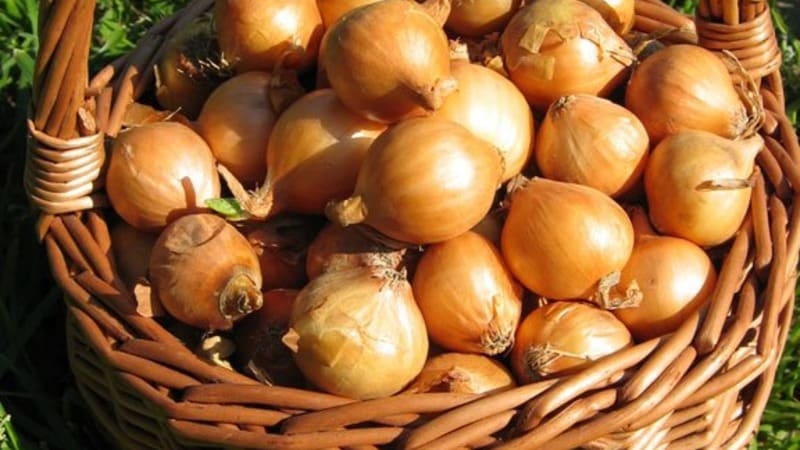
Peter, Samara: “I’ve been planting this variety for more than one year.I sow sevkom, which I buy from the manufacturer. The bulbs are a pleasant yellow color, not quite large, but they suit me quite well. The taste is also wonderful, not spicy, not bitter, everything in moderation. It’s easy to care for, and the fact that the variety is frost-resistant is a big plus.”.
Ekaterina, Sverdlovsk region: “Very good, large onions grow from the sets. I store it in a bag, in a dry place at a temperature of 18°C. The bulbs last a long time, until the new planting season. Great for salads and any preserves".
Conclusion
Shetana MS onion is excellent for spring planting and winter sowing. This variety is characterized by smooth fruit ripening, good disease resistance, ease of care and high fruiting rates.
The crop does not require special attention or complex agrotechnical techniques, so even a novice vegetable grower can cope with cultivation.